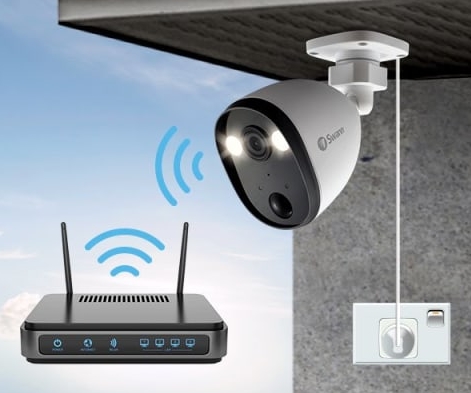Welcome to our blog post on how to choose the best wireless security cameras for outdoor use! In today’s fast-paced world, ensuring the safety and security of our homes has become more important than ever. Wireless security cameras provide a convenient and effective solution to monitor your property and keep an eye on any potential threats. In this article, we will explore how wireless outdoor security cameras work, discuss the benefits of wireless cameras compared to wired ones, and delve into how these cameras connect to WiFi. So, let’s dive in and discover the perfect wireless security camera for your outdoor needs!
How do wireless outdoor security cameras work?
Wireless outdoor security cameras operate by using advanced technology to transmit video and audio signals without the need for physical wires. These cameras are equipped with built-in transmitters that send the captured footage to a receiver, which can be connected to your smartphone, computer, or a dedicated monitoring system. This wireless transmission allows you to conveniently access the camera’s live feed and recorded footage from anywhere, as long as you have an internet connection.
One of the key components of wireless outdoor security cameras is their power source. These cameras typically rely on batteries for operation, making them truly wire-free. However, it’s important to consider the battery life of the camera you choose, as it will determine how often you need to recharge or replace the batteries. Some wireless cameras also offer the option of connecting to a power outlet, providing a continuous power supply for extended surveillance periods.
Is it better to have wired or wireless security cameras?
When deciding between wired and wireless security cameras for outdoor use, it ultimately depends on your specific needs and preferences. Both types have their advantages and considerations. Let’s take a closer look at the benefits of wireless cameras.
First and foremost, wireless security cameras offer easy installation and flexibility. Without the need for extensive wiring, you can quickly set up these cameras in various locations around your property. This convenience also allows for hassle-free repositioning whenever required. Additionally, wireless cameras are an excellent choice if you’re renting a property or prefer not to deal with the complexities of wiring.
Furthermore, wireless outdoor security cameras provide seamless remote access. By connecting to your home’s WiFi network, you can conveniently monitor your camera’s feed using your smartphone or computer. This accessibility is particularly valuable when you’re away from home but still want to keep an eye on your property. Many wireless cameras also offer motion detection and alerts, notifying you instantly if any suspicious activity is detected.
On the other hand, there are times when wired security cams may be better. Since they are directly linked to a power source and recording device, they are known for being stable and reliable. Wired cams can be helpful if you want to keep an eye on something without having to worry about the battery life. Wire-connected cameras, on the other hand, can be harder to set up and may need professional help, based on how technical you are.
How do wireless cameras connect to WiFi?
 Wireless outdoor security cameras connect to WiFi networks using a wireless protocol called Wi-Fi Protected Setup (WPS) or by manually entering the network credentials. Wi-Fi Protected Setup simplifies the process by allowing you to connect your camera to your WiFi network with just a push of a button or by scanning a QR code. This feature eliminates the need for manually entering lengthy WiFi passwords.
Wireless outdoor security cameras connect to WiFi networks using a wireless protocol called Wi-Fi Protected Setup (WPS) or by manually entering the network credentials. Wi-Fi Protected Setup simplifies the process by allowing you to connect your camera to your WiFi network with just a push of a button or by scanning a QR code. This feature eliminates the need for manually entering lengthy WiFi passwords.
For cameras that don’t support Wi-Fi Protected Setup, you can connect them to your WiFi network manually. This involves accessing the camera’s settings through a mobile app or web interface and entering your WiFi network’s SSID (network name) and password. Once the credentials are saved, the camera will establish a wireless connection to your WiFi network, enabling you to access the camera’s live feed and recorded footage remotely.
It’s worth mentioning that the range and stability of the WiFi signal play a crucial role in the performance of wireless security cameras. If your outdoor camera is located far from the WiFi router or if there are obstacles that hinder the signal, you may experience connectivity issues or poor video quality. In such cases, using WiFi range extenders or positioning your router closer to the camera’s location can help improve the connection reliability.
Conclusion
Wireless cameras are a handy and trustworthy way to keep an eye on your property and make it safer. But it’s important to think about your own needs and tastes before making a choice. By knowing how wireless outdoor security cameras work, weighing the pros and cons of wired vs. wireless options, and knowing how to connect these cameras to your WiFi network, you’ll be able to make an informed decision and choose the best wireless security camera system for your outdoor surveillance needs. Keep yourself safe!

